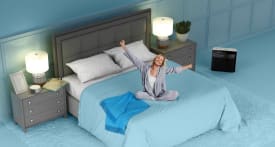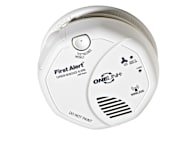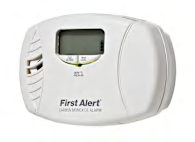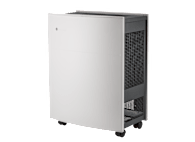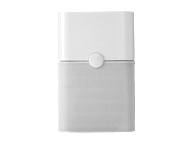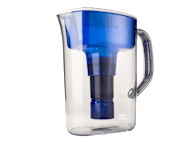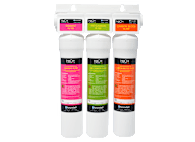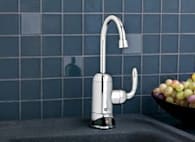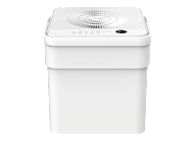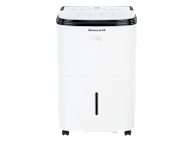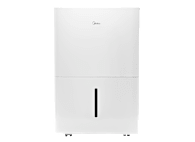20 Products to Improve Your Home's Indoor Air Quality
The carbon monoxide detectors, air purifiers, water filters, and more that can keep you and your family safe
When you shop through retailer links on our site, we may earn affiliate commissions. 100% of the fees we collect are used to support our nonprofit mission. Learn more.
Indoor air pollution—from mold, radon, cooking gasses, and more—can pose a serious health threat. Here’s how to combat harmful contaminants in your home, and some useful products to help.
Check for Contaminants
Some hidden home hazards, such as asbestos in your kitchen tiles, can require hiring a professional. Others, including radon gas in your basement or lead in paint, can be detected through simple tests you purchase online or in a hardware store. (CR has not tested those kits, but examples are shown below.) And everyone should have carbon monoxide detectors.
Clean Your Air
Air purifiers can capture pollen, pet dander, dust, and even COVID-19 viral particles. Limiting dust is especially important because potentially dangerous volatile organic chemicals emitted from furniture and cleaners can adhere to particles in the air. So using a good air purifier can help limit the spread of those compounds in the air. Below are several CR-recommended air purifiers at different prices.
Make Your Water Safer
Get a water filter that can remove lead. Below are some that passed CR tests for removing this dangerous heavy metal. Pitchers are easy to use but filter small amounts at a time. Under-sink and countertop models can filter more and are relatively easy to install. Reverse osmosis systems can remove a range of contaminants but they’re expensive, can be hard to maintain, and create 3 to 5 gallons of wastewater for every gallon filtered.
Control Mold
Dehumidifiers can help prevent mold by keeping humidity levels between 30 and 60 percent. Drier air can also help keep dust mites and allergies at bay. The larger and damper the space you want to keep dry, the larger the dehumidifier you need. Below, CR recommended models in three sizes.
Here are the products you need to detect potentially harmful contaminants in your home and ones that help reduce those levels, too.
Check for Contaminants
The First Alert OneLink SC501CN is a battery-powered model that earns top scores across the board in CR’s tests, including for detecting low and high levels of CO as well as for the accuracy of its CO readings.
If you need a battery-powered CO detector, check out the First Alert Onelink CO511B. It excels in our tests for detecting high and low CO levels as well as for the accuracy of its CO readings, which it “speaks” via voice. In addition to its voice alerts, this model features the ability to wirelessly connect with other compatible alarms. It also has a peak memory feature that logs the highest CO reading so you can see if there was a problem while you were away from home.
The First Alert CO615 is one of the few plug-in CO detectors in our tests, and it beats out its hardwired and battery-powered brethren, with strong scores in our tests for detecting high and low CO levels quickly, as well as a Very Good rating for the accuracy of its CO level display. It features a battery backup and peak memory (so you can check whether CO levels were high after you’ve been gone for a long time).
For more options: Best Smoke and Carbon Monoxide Detectors
Paint Lead Test Kits
3M LeadCheck Kit

If your home was built or renovated before 1978, test the paint for lead, especially if young children are in the home. The 3M LeadCheck and D-Lead kits (see below) work on wood, drywall, plaster, steel, and iron. But it’s best to hire a professional, according to the EPA, and you need a pro to test other surfaces, such as stucco.
D-Lead Paint Test Kit
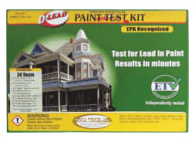
Like the 3M kit above, this D-Lead kit works on wood, drywall, plaster, steel, and iron. It’s always best to hire a pro, according to the EPA, and you’ll definitely need one if you’re testing any other surface than those listed.
Radon Test
First Alert Radon Gas Test Kit, RD1
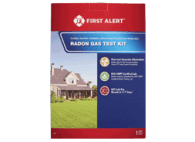
Everyone should test their home at least once. Tests like this one, available at hardware stores and online, usually involve putting a detector in your basement or, if you don’t have a basement, on your first floor.
Clean Your Air
The Alen BreatheSmart 75i Pure proves to be top-notch at capturing and removing dust and smoke while running at high and low levels, earning an Excellent score on both tests. Holding a conversation or getting work done while the unit runs should be easy enough. The model receives a strong score for noise levels at high and low speeds. Another reason this model receives high marks? Its energy and operating costs, including filter replacements, run roughly $140 annually, which is significantly less than the other standout models in our ratings. And it covers up to 1,300 square feet, which is much more than the others highlighted here.
Man, can this machine clear a room! It’s 1 of only 4 models that earns Excellent scores for particle removal at high- and low-speed settings. The Blueair Classic 605 is pretty quiet at low speeds but downright noisy at high speed, though it will clean a room quickly in that setting. Filter replacements and energy use will set you back around $260 per year. The machine weighs a hefty 30 pounds but has casters that make it easy to cart from room to room. Its claimed capacity is a room of 775 square feet.
The reasonably priced Blueair Blue Pure 211+ is 1 of only 4 portable air purifiers that receives an Excellent rating for particle removal at high- and low-speed settings in CR’s tests. Plus, it has a machine-washable fabric prefilter for capturing larger particles (like pet hair) that can prolong the life of the main filter. It’s designed for floor use in a large room. But there are a couple of caveats. Expect some noise when the unit is running at high speed; it gets a below-average score on that test. You’ll also have to shell out about $200 each year for energy and operating costs.
For more options: Best and Worst Air Purifiers
Make Your Water Safer
If you’re patient enough to wait up to an hour for this Pur to filter water (as in, you fill it up and throw it in the fridge or put it on the counter for later), this pitcher may be for you. Despite its below-average flow rate (the number of minutes it takes to filter 32 ounces of water), the Pur Ultimate with Lead Reduction PPT711W ranks near the top of our ratings. In this case, effective filtering takes its time. The upshot: It’s the best water filter pitcher for improving flavor and reducing odor, and it doesn’t clog; in our tests for each, it earns Excellent ratings.
The ZeroWater Ready-Pour ZD-010RP is perhaps the steadiest filter performer. Among the top five water filter pitchers in our ratings, it’s one of two NSF certified for both lead and chlorine removal. It earns Very Good ratings for improving flavor and for odor reduction. This versatile pitcher also earns an Excellent score in our test for clogging, which means it will flow consistently over time. But you’ll pay for that effectiveness, with a pricey filter replacement cost of $78 per year. That’s more than double the replacement cost of the top-ranked Brita.
For more options: Best Water Filter Pitchers
The priciest water filter we tested is also one of the highest-rated and has the highest capacity, 750 gallons. It boasts superb scores for flavor and odor reduction, clogging, and flow rate, which means it can filter one quart of water quickly. This Multipure Aquaversa MP750 is certified to reduce lead and chlorine too, according to NSF standards. This model is only 9.25 inches deep—the shallowest of the choices here—and is a little squatter than the others, so measure your under-counter space before you buy. It’ll cost you about $90 per year to replace the filter cartridges.
This 12-inch-deep Brondell Coral UC300 Three Stage filters up to 600 gallons of water via three cartridges. The end-of-life indicator will alert you when it’s time to replace the cartridge. It rates among the best in our tests for improving flavor, reducing odor, and clogging, and earns a Very Good score for flow rate. Though it takes slightly longer to filter than a few others in our tests, it’s certified to the NSF standard for removing lead and chlorine. Replacement cartridges will run you about $100 per year.
For more options: Best Under-Sink Water Filters
If your annual water-quality report shows you have a wide range of contaminants or bacteria in your water, a reverse osmosis water filter like the high-rated GE GXRM10RBL is your best bet. These filters force water through a semi-permeable membrane to wall off synthetic chemicals like PFAS (Polyfluoroalkyl substances or “forever chemicals”), which have been linked to cancer, high cholesterol, and learning delays in children.
Control Mold
One of our top-scoring small-capacity dehumidifiers, the Midea MAD20S1QWT earns top marks for water removal, noise, convenience, and humidistat accuracy in CR’s lab tests. It’s also energy-efficient, comes with a drain hose, and has some nice bells and whistles, such as a timer and an auto-restart feature that turns the machine back on to its prior settings after a power outage.
The Frigidaire FFAD2233W1 can remove 22 pints of water from the air per day, and the tank holds 12 pints, almost twice the amount of most models we tested in this category. It gets the job done, but the humidistat isn’t as accurate as others in this category; it earns only a Fair rating in that test. (For less than $10, you can purchase a hygrometer that measures humidity.) This is a basic model and does not have an auto-restart feature or a clean-filter alert.
The Midea MAD35S1QWT is one of the very best dehumidifiers in all of our ratings. This top performer, which can remove 35 pints of moisture from the air per day, aces our water removal, energy efficiency, and convenience tests. It also earns an Excellent score for noise, making it one of the quietest in this category. This model is equipped with a digital display, a built-in water pump, and a timer.
The hOmeLabs HME020006N can remove 35 pints of moisture from the air per day and is one of the quietest models in this category, earning standout scores in our noise tests. The tank holds 12 pints of water, and like most models we tested, there’s a timer and an auto-restart feature, handy if there’s a power outage. There’s a clean-filter alert, too. Predicted reliability received a top score; hOmeLabs also is the only dehumidifier brand in our ratings to earn a Very Good score for owner satisfaction.
The Honeywell TP70WKN is among the highest-scoring of all dehumidifiers we’ve tested and can remove 50 pints of moisture from the air per day. The tank, however, is smaller than most in its category and holds just 13 pints of water. That means you’ll have to empty it more often. But like all the tested models, this one allows you to connect a hose that diverts water to a drain. A nice touch: The hose is provided.
The Midea MAD50C1ZWS checks all the key boxes for keeping your basement dry. Water removal: excellent. Humidistat accuracy: also excellent. Noise and energy efficiency: very good. Indeed, its only drawback is a relatively small 15-pint tank, contributing to its mediocre convenience score. To remove the 50 pints it’s designed to handle daily, you’ll have to empty it several times a day, or buy and attach a hose to divert the water to a drain. Predicted reliability, though, received top marks.
For more options: Best Dehumidifiers for Basements, Crawl Spaces, and Other Damp Areas
Editor’s Note: This article also appeared in the November 2022 issue of Consumer Reports magazine.




